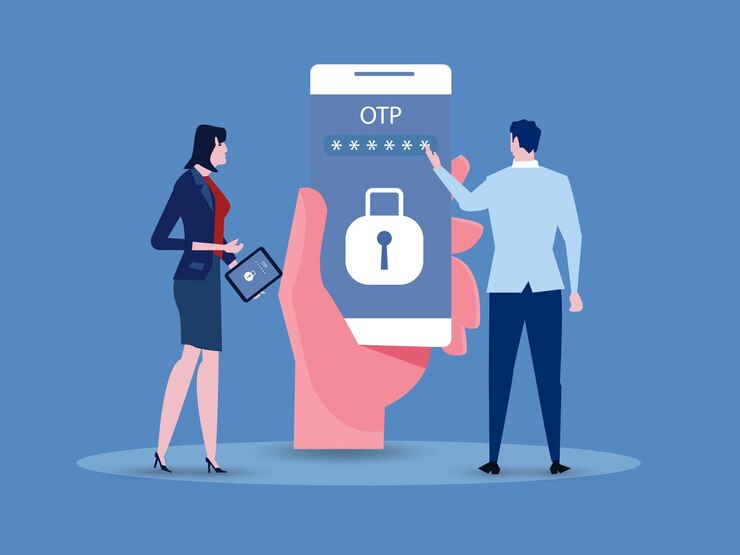
In the realm of information technology, security and user authentication are paramount. One-Time Password (OTP) technology plays a crucial role in ensuring secure access to systems, protecting sensitive information, and enhancing overall cybersecurity. This article explores the concept of OTP in information technology, its working mechanism, applications, benefits, challenges, and future trends.
What is OTP?
OTP, or One-Time Password, is a unique, temporary code used for a single authentication session or transaction. Unlike traditional passwords, which remain static and can be reused multiple times, OTPs are dynamic and expire after a single use. This transient nature makes OTPs significantly more secure, reducing the risk of unauthorized access.
How OTP Works
Generation
OTPs can be generated using several methods:
- Time-based: Generated based on the current time and a shared secret key.
- Event-based: Generated based on a counter value that increments with each OTP request.
- Random: Generated using random number algorithms.
Delivery
Once generated, OTPs are delivered to users through various channels:
- SMS: Sent directly to the user’s mobile phone.
- Email: Delivered to the user’s registered email address.
- Authenticator Apps: Generated within apps like Google Authenticator, Microsoft Authenticator, or Authy.
- Hardware Tokens: Physical devices that generate OTPs independently.
Verification
During authentication, the user enters the received OTP along with their username and static password. The system verifies the OTP against its own generated value, ensuring it matches and is still valid.
Applications of OTP in Information Technology
User Authentication
OTPs are widely used for user authentication in various IT applications:
- Login: Enhancing security for logging into systems and applications.
- Password Reset: Verifying user identity during password reset processes.
- Account Recovery: Providing secure methods for account recovery.
Financial Transactions
In banking and finance, OTPs are crucial for:
- Transaction Authorization: Verifying and authorizing financial transactions.
- Online Banking: Ensuring secure access to online banking services.
- Mobile Payments: Securing mobile payment applications.
Secure Access to Systems
OTPs help in securing access to sensitive systems and data:
- Corporate Networks: Protecting access to corporate networks and resources.
- Cloud Services: Ensuring secure login to cloud-based services and applications.
- Remote Access: Providing secure remote access for employees and partners.
Benefits of OTP
Enhanced Security
The primary advantage of OTPs is the significant enhancement in security. Since OTPs are unique and expire after a single use, they reduce the risk of password theft and unauthorized access. Even if a static password is compromised, the attacker cannot use it without the corresponding OTP.
Ease of Use
OTPs provide a user-friendly authentication method. Users receive OTPs through familiar channels like SMS, email, or authenticator apps, making the process straightforward and convenient.
Flexibility
OTPs offer flexibility in implementation. They can be used across various platforms and applications, providing a versatile security solution for different scenarios.
Compliance
For industries with strict regulatory requirements, such as finance and healthcare, OTPs help meet compliance standards by offering robust security measures that protect sensitive information.
Challenges of OTP

Delivery Delays
One challenge with OTPs is the potential for delivery delays, especially with SMS and email-based OTPs. These delays can hinder the user experience and lead to frustration.
Dependency on Mobile Devices
Many OTP methods rely on mobile devices for delivery, which can be a drawback if the user loses access to their device or if the device is compromised.
Implementation Costs
While OTP systems enhance security, they also come with implementation and maintenance costs. Organizations need to invest in infrastructure and ensure ongoing support for OTP systems.
User Convenience
While OTPs are generally user-friendly, some users may find the additional step of entering an OTP inconvenient. Balancing security and user convenience is a critical consideration.
Future Trends in OTP Technology
Biometrics Integration
Future advancements in OTP technology may include integration with biometric authentication methods, such as fingerprint or facial recognition. This combination will provide even stronger security while maintaining user convenience.
Adaptive Authentication
Adaptive authentication uses contextual information to determine the level of authentication required. OTPs can be part of an adaptive authentication framework, where their use is based on factors like user location, device, and behavior patterns.
AI and Machine Learning
Artificial intelligence (AI) and machine learning can enhance OTP systems by analyzing patterns and detecting anomalies in authentication requests. This can help identify and mitigate potential security threats more effectively.
Multi-Channel Delivery
To address delivery challenges, future OTP systems may offer multi-channel delivery options, ensuring users can receive OTPs through the most reliable and convenient method available at the time.
Implementing OTP in Information Technology
Best Practices
To effectively implement OTP systems, organizations should follow best practices:
- Multi-Factor Authentication (MFA): Combine OTP with other authentication factors, such as passwords and biometrics, to create a robust MFA system.
- Regular Audits: Conduct regular security audits to identify and address potential vulnerabilities in the OTP system.
- User Education: Educate users on the importance of OTPs and how to use them securely.
Choosing the Right Solution
When selecting an OTP solution, organizations should consider factors such as:
- Scalability: The ability to scale the OTP system to accommodate growing user bases and transaction volumes.
- Compatibility: Ensure the OTP solution is compatible with existing systems and applications.
- Reliability: Choose a solution with a track record of reliable OTP delivery and minimal downtime.
Conclusion
OTP technology is a critical component in the landscape of information technology security. By providing unique, temporary codes for authentication, OTPs significantly enhance security, reduce the risk of unauthorized access, and offer a convenient user experience. While challenges exist, ongoing advancements and best practices in OTP implementation continue to improve its effectiveness. As technology evolves, OTP will remain a vital tool in protecting sensitive information and ensuring secure access in the digital age.

3 thoughts on “What is OTP in information technology”